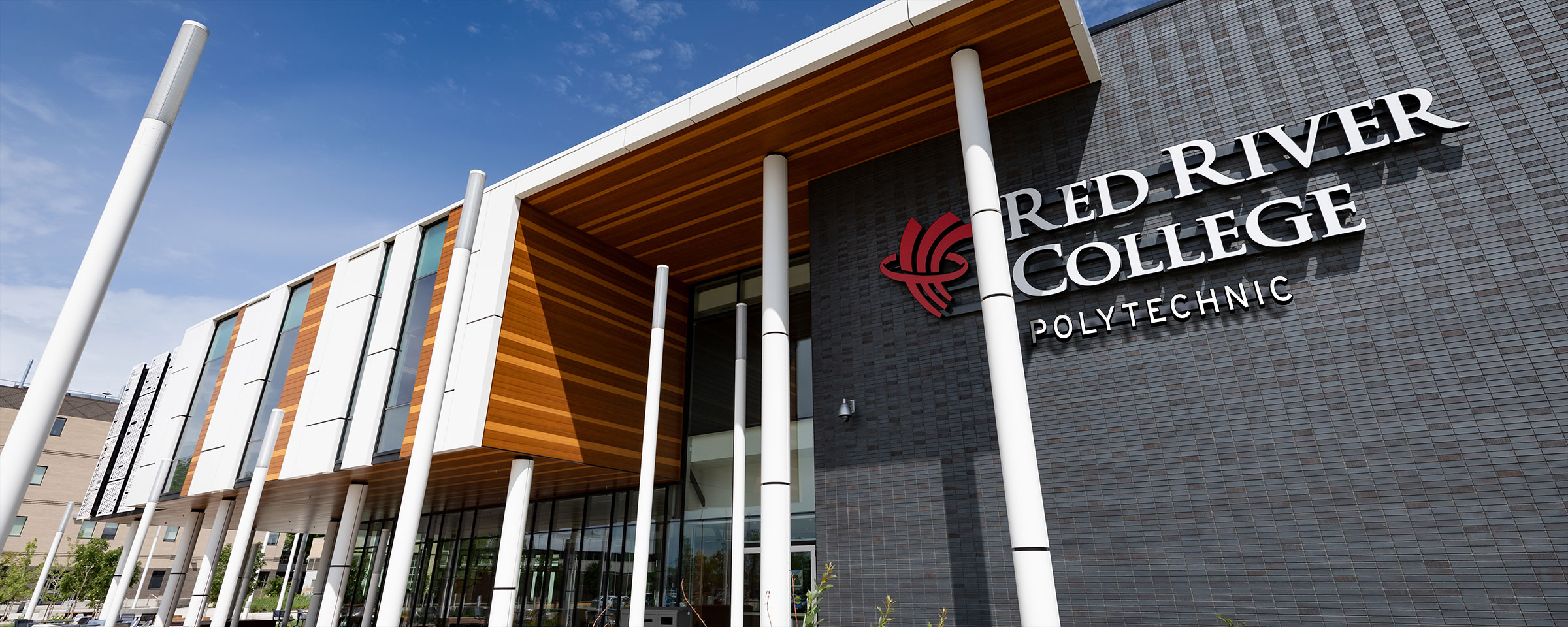Development of new ceremonial grounds underway at Notre Dame Campus

In the northwest corner of Red River College’s Notre Dame Campus, there’s a peaceful retreat students and instructors can explore when they need a break from the hustle and bustle of classes. A loop of trees, small boulders and benches encloses another circle of coloured bricks, the quarters of which align with the four points of a compass.
The College’s Medicine Wheel Garden isn’t just a quiet pavilion, however. The Indigenous symbol at its heart emphasizes different concepts for different people — the four seasons, the journey from birth to old age, and the meeting of different nations. It’s a familiar image for young people who may have moved hundreds of miles from their home communities in order to attend College.
“The medicine wheel is certainly an important symbol to Indigenous people of North America,” says Dr. Mark Aquash, RRC’s Dean of Indigenous Education, who uses the medicine wheel as a tool for teaching students from any cultural perspective. “The Indigenous worldview is an important perspective today, as we are now feeling the impact of disrespecting Mother Earth and damaging our fragile ecosystems. Understanding the Indigenous worldview is learning about respect.”
In keeping with RRC’s strategic priority to advance Indigenous achievement over the next five years — weaving knowledge, philosophy, perspectives and content into programming and campus culture — a sweat lodge and change rooms will be installed at the same site this summer, marking the first step in the College’s ceremonial grounds expansion plan.
“There are several phases,” says Mark Wills, the project manager overseeing the build and a 17-year veteran of previous RRC expansions. “The committee involved has plans to extend the ceremonial grounds for powwows, and to set up sites for tipis and other structures.”
“The change rooms will be permanent, but the actual sweat lodge structure will be erected per use. They’re relatively simple, just a structure made of willow branches lashed together to create a shell. That’s covered by canvas, which I understand the elders will set up and take down themselves.”
While it’s a simple structure compared to Wills’ past projects for the College, Aquash says the sweat lodge will have a deep impact on students and staff.
“Indigenous people have walked a long anguished road,” he says. “Indigenous elders from across North America are proud that their children and grandchildren are seeking to understand their identities. They are asking about their creation stories, their ceremonies, their clans, and who their ancestors are. Experiencing a sweat lodge is part of that preparation for learning, a process of prayer and purification.
Wills agrees.
“I think it’s a great thing the College is doing,” he says. “It’s a tool the Elders can use to educate the students. They can actually take them up there to the grounds where the medicine wheel is, and the sweat lodge, and they can have meetings and teachings — so I think it’s quite significant.”
“It’s an interesting project for me, too,” he adds. “Before I was approached to get involved, I didn’t know what a sweat lodge was. I’ve spent time learning about them through the Elders and my own research — how they’re constructed, their purpose and their orientation.”
 The project promises hands-on education for others, as well. Unlike his usual practice of working with contractors, Wills teamed this time with students from the School of Indigenous Education’s carpentry program to construct the change rooms.
The project promises hands-on education for others, as well. Unlike his usual practice of working with contractors, Wills teamed this time with students from the School of Indigenous Education’s carpentry program to construct the change rooms.
“One of the carpentry instructors and the chair of the department casually had a conversation at coffee, and they offered to have the students do the build,” Wills says. “We saw this as a great opportunity to get the students involved, and the committee was thrilled about the idea when they heard it.”
While the change rooms are now complete, Wills expects the site won’t see its first ceremony until September when the majority of students return. By then, the College’s new Strategic Plan will be finalized — allowing staff and students alike to begin delivering on the commitments made therein.
“The College is in a good position to provide Indigenous communities, students and their families with a relevant and culturally safe environment,” says Aquash. “Our overall Indigenous achievement plan will address the future success of students, which ultimately impacts families and community self-determination.”
Learn more about RRC’s School of Indigenous Education, and the College’s newly released Academic and Research Plan.
